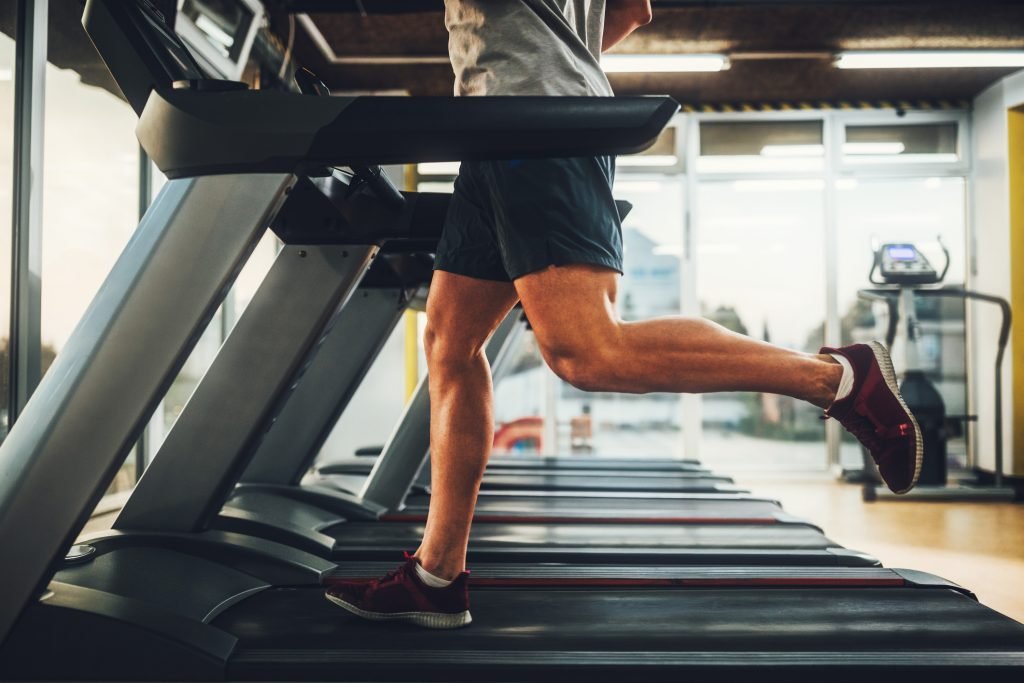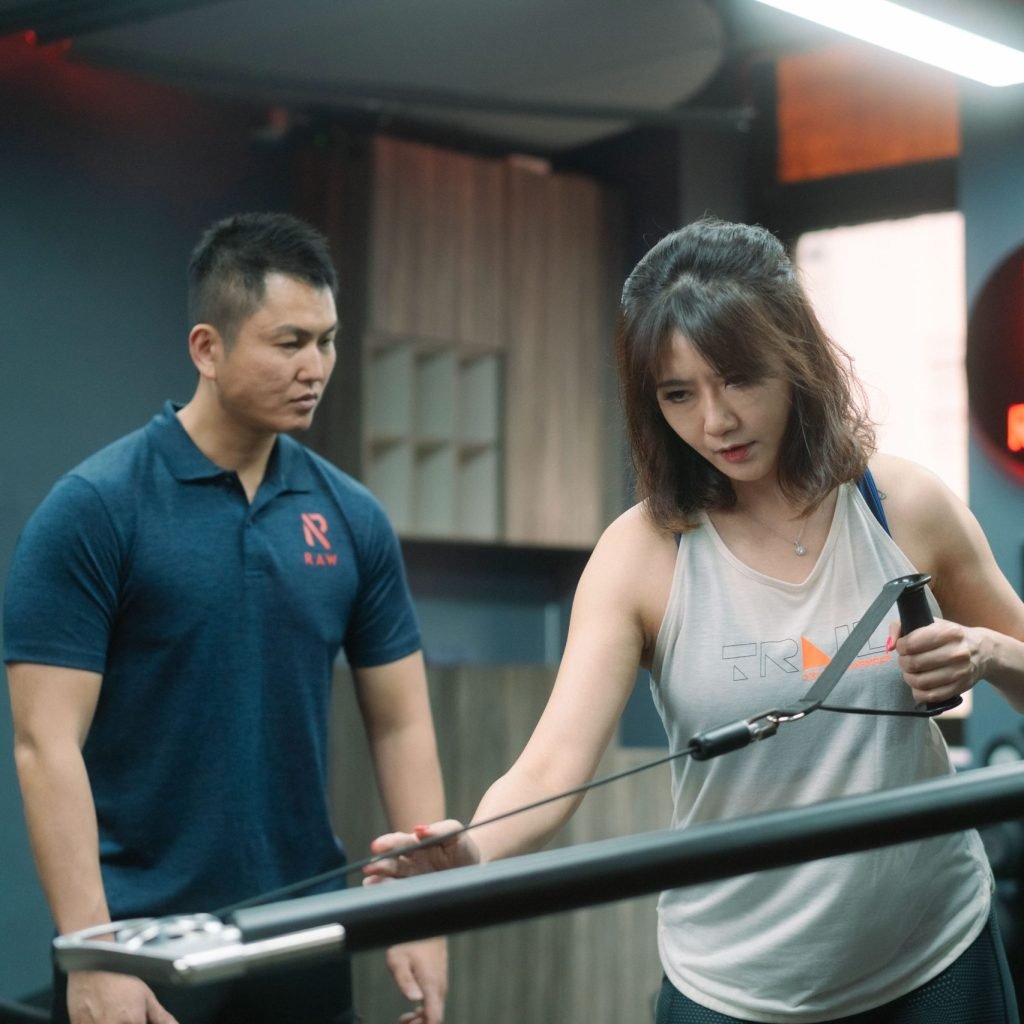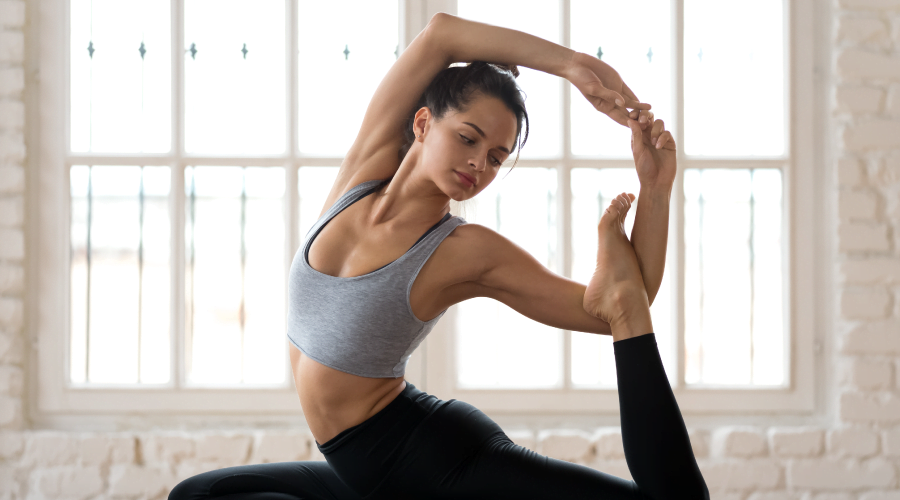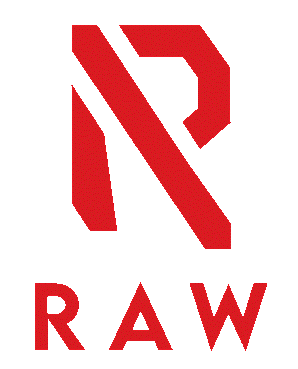Physical training balances five fitness elements of good health. Make sure your physical training routine includes aerobic fitness, strength training, core training, balance training, and mobility.
Whether you’re a beginner taking the first steps toward physical training/ fitness or an exercise fanatic hoping to optimize your results, a well-rounded physical training program is essential. Include these five important elements to create a balanced routine.

1. Aerobic Fitness
Aerobic training, also known as cardio-respiratory training, is the foundation of most physical training programs. Aerobic training causes you to breathe faster and more deeply, which maximizes the amount of oxygen in your blood. Your heart will beat faster, which increases blood flow to your muscles and back to your lungs.
The better your aerobic fitness, the more efficiently that your heart, lungs and blood vessels transport oxygen throughout your body — and the easier it is to complete daily physical tasks.
Aerobic activity includes any physical activity that uses large muscle groups and increases your heart rate. Try walking, jogging, biking, swimming, dancing, water aerobics — even leaf raking, snow shoveling and vacuuming.
American College of Sport Medicine (ACSM) is known throughout the industry as the “gold standard” when it comes to exercise recommendations. For most healthy adults, it is recommended that all healthy adults aged 18–65 yr should participate in moderate intensity aerobic physical activity for a minimum of 30 min on five days per week, or vigorous intensity aerobic activity for a minimum of 20 min on three days per week.
The guidelines suggest that you spread out this exercise during the course of a week. You can even break up activity into shorter periods of exercise and aim to move more during the day. Any amount is better than none at all.
You can also try high-intensity interval training, which involves alternating short bursts of intense activity (around 30 seconds) with subsequent recovery periods (around one minute) of lighter activity. For example, you could alternate periods of brisk walking with periods of leisurely walking, or include bursts of jogging in your brisk walks.

2. Strength Training
Muscular fitness is another key component of a fitness training program. strength training can help you increase bone strength and muscular fitness, and it can help you manage or lose weight. It can also improve your ability to do everyday activities. Aim to include strength training of all the major muscle groups into your fitness routine at least twice a week.
Most fitness centers offer various resistance machines, free weights and other tools for strength training. But you don’t need to invest in a gym membership or expensive equipment to reap the benefits of strength training.
Body weight training works too! Check out here!
General Resistance Training Concepts
Muscular Adaptations
It’s important to know what your goals are when it comes to resistance training. Why? Your body will adapt to the type of training that you do. If your goal is to improve your balance, but you only focus on building strength, you might not see the results that you were hoping for. It’s best to plan your workouts around the results that you’d like to see.
Here are the main adaptations:
• Stabilization: Developing good stability around the joints and sufficient muscular endurance to produce good movement with a healthy range of motion.
• Muscular Endurance: The ability to produce and maintain force production for prolonged periods of time.
• Hypertrophy: Increased muscle size.
• Strength: The ability of the muscles to overcome external force, often using increasingly heavy loads.
• Power: The ability to produce the greatest possible force in the shortest amount of time (explosive movement!).
It’s not necessary to achieve each one of these goals, although there are benefits to each.
Acute Variables
With resistance training, you can modify what is called the acute variables (sets, reps, tempo, rest, and intensity) to work toward any one of those adaptations. Here are the acute variables used for each muscular adaptation:
Stabilization (Phase 1: Stabilization Endurance Training)
| SetsRepsTempoRestIntensity1-312-20Slow0-90 Sec12-20RM (Rep Max) |
Muscular Endurance (Phase 2: Strength Endurance Training)
| SetsRepsTempoRestIntensity2-48-12 (Strength) 8-12 (Stability) Moderate Slow 0-60 sec after each superset8-12RM |
*Note: This phase uses supersets with the first exercise being a strength exercise, and the second being a biomechanically similar stability exercise.
Hypertrophy (Phase 3: Muscular Development Training)
| SetsRepsTempoRestIntensity3-66-12Moderate0-60 secN/A |
Strength (Phase 4: Maximal Strength Training)
| SetsRepsTempoRestIntensity4-61-5Explosive2-4 Min1-5RM |
Power (Phase 5: Power)
| SetsRepsTempoRestIntensity3-51-5 (Strength) 8-10 (Power) Explosive1-2 min between pairs; 3-5 minutes between circuits1-5RM, 8-10RM, or 30-45% of 1RM |
*Note: This phase uses supersets with the first exercise being a heavy strength exercise, and the second being a biomechanically similar power exercise using lighter weight.
PROGRESSIVE TRAINING
Even if your goal is to increase your muscle size (aka: hypertrophy), it’s important to work your way toward that more advanced type of training. At RAW, we use the OPT Model from NASM to appropriately progress through each phase to maximize results and minimize the risk of injury or over-training. Think of the model as building blocks. Certain foundational blocks must be built well before progressing, or the house might fall, so to speak.

3. Core Training
The muscles in your abdomen, lower back and pelvis — known as your core muscles — help protect your back and connect upper and lower body movements. Core strength is a key element of a well-rounded fitness training program.
Core exercises help train your muscles to brace the spine and enable you to use your upper and lower body muscles more effectively. So what counts as a core exercise? A core exercise is any exercise that uses the trunk of your body without support, such as bridges, planks, situps and fitness ball exercises.
4. Balance training
Balance exercises can help you maintain your balance at any age. It’s generally a good idea for older adults in particular to include exercises to maintain or improve balance in their routine exercises.
This is important because balance tends to deteriorate with age, which can lead to falls and fractures. Balance exercises can help older adults prevent falls and maintain their independence.
However, anyone can benefit from balance training, as it can help stabilize your core muscles. Try standing on one leg for increasing periods of time to improve your overall stability. Activities such as tai chi can promote balance, too.
Do check out our Power Plate Training which can improve your proprioception and balance more than conventional training. Check it out here!

5. Mobility Training
Mobility training is an important aspect of physical training, and it’s a good idea to include mobility drills in a fitness program. Mobility training can help to increase flexibility, which can make it easier for you to do many everyday activities that require flexibility.
Flexibility is the ability of your joints to move through their full range of motion without pain or stiffness. It also refers to the pliability of the muscles that support the joints. Flexible muscles and tendons allow for greater range of motion during activities.
Stretching can also improve the range of motion of your joints and may promote better posture. Regular stretching can even help relieve stress and tension.
Consider stretching after you exercise — when your muscles are warm and receptive to stretching. But if you want to stretch before a workout, warm up first by walking or exercising for five to 10 minutes before stretching.
Ideally, you’ll stretch whenever you exercise. If you don’t exercise regularly, you might want to stretch at least two to three times a week after warming up to maintain flexibility. You can mobility training such as Functional Range Conditioning (FRC).
Enter Functional Range Conditioning (FRC)
Functional Range Conditioning (FRC) became very popular in the fitness, rehab, and sports medicine world a couple of years ago and it is here to stay as it has many applicable uses. FRC focuses on improving mobility. Mobility, in an FRC sense, is defined as strength and control in order to expand upon usable ranges of motion, articular resilience (i.e. load-bearing capacity), and overall joint health. Adding FRC principles into your training and prehab routine can be a huge game-changer! This article will provide you an intro to FRC principles provided with exercise examples that we have included in a variety of our prehab programs.
Understanding Functional Range Conditioning
We start with the FRC principle: controlled articular rotations. This is a great introduction to FRC, the basic concept of CARs is that the joint capsule relays multidirectional and rotatory information to the central nervous system. For this reason, the rotatory component of CARs is essential and should not be overlooked. The mechanoreceptors that innervate our joint capsules provide the central nervous system (CNS) with afferent feedback carrying signals that relate to what is going on within the joint. More stimulus to the mechanoreceptors means more afferent feedback to the CNS, which causes more efferent output back to the musculoskeletal system, ultimately inducing more control.
Upper Body FRC Exercises: Shoulder CARs
Cover all the bases
Whether you create your own fitness training program or enlist the help of a personal trainer, your overall exercise plan should include several elements. Aim to incorporate aerobic fitness, strength training, core exercises, balance training, and mobility training into your exercise plan.
It isn’t necessary to fit each of these elements into every fitness session, but factoring them into your regular routine can help you promote fitness for life.
Our personal training allows you to meet your lifestyle needs and is flexible to fit into your busy schedule. Feel free to contact us for details.
- The Art of Rest: Knowing When to Stop and Recover During Training - October 21, 2025
- Revolutionizing Scoliosis Management - October 12, 2025
- Preventing Knee Pain in Female Youth Soccer Players: A Comprehensive Training Approach - October 12, 2025

15 Responses